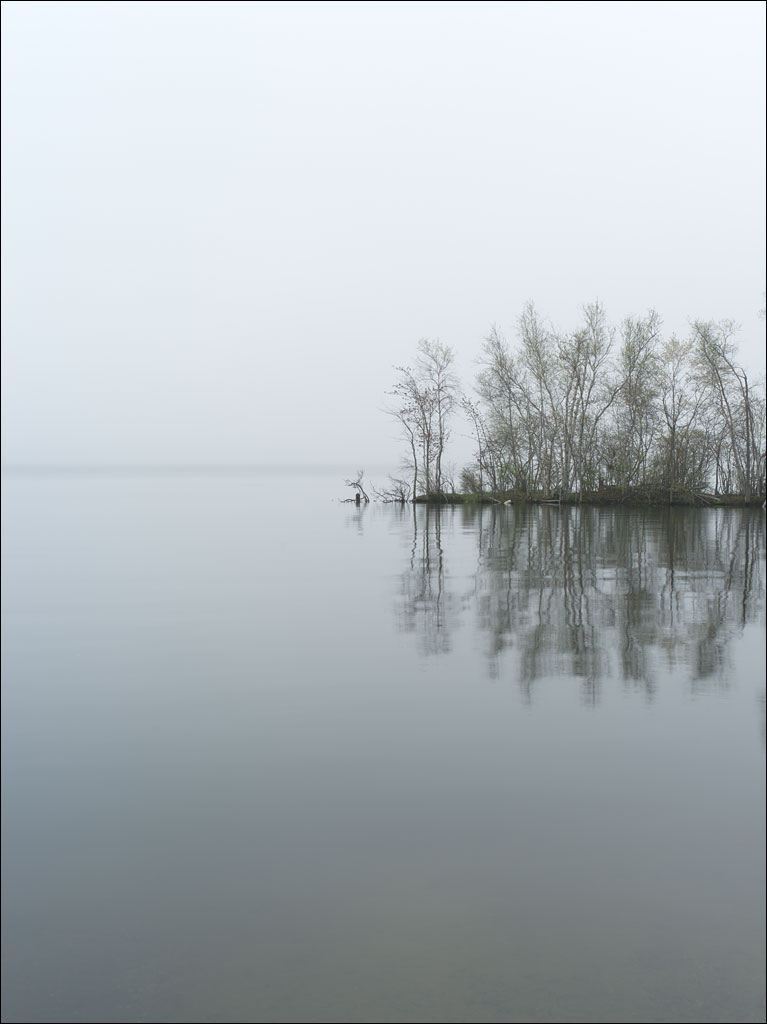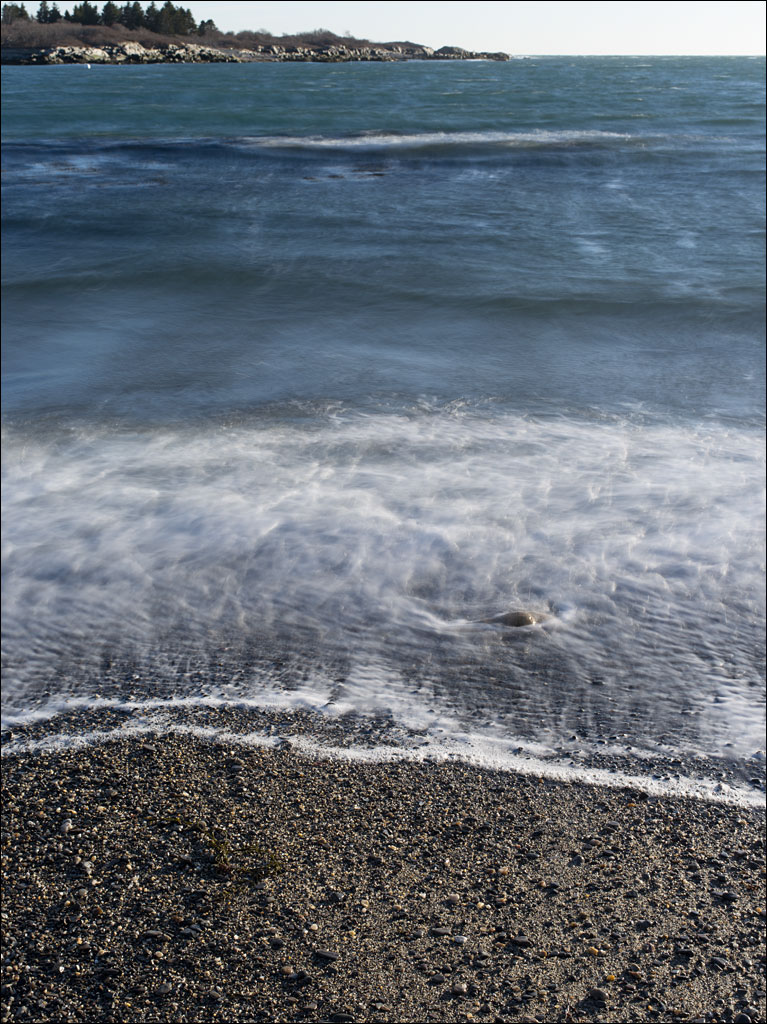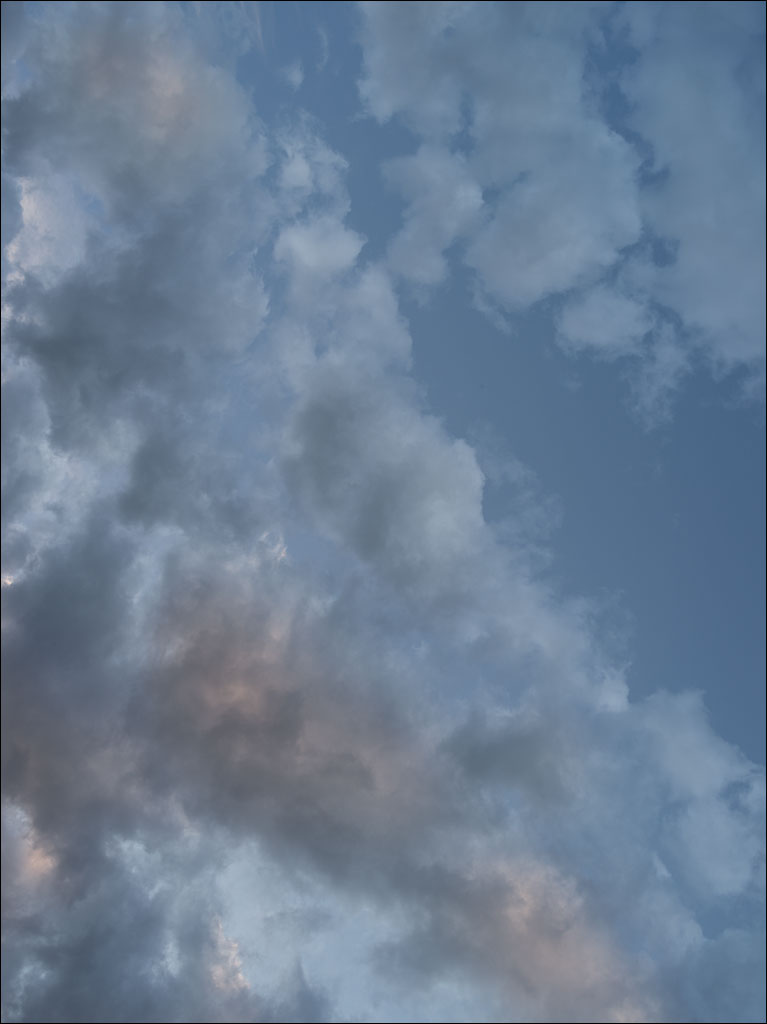 Almost Blue is also a Chet Baker song. Click on the image for a larger view.
Almost Blue is also a Chet Baker song. Click on the image for a larger view.
Category Archives: Meditations
In the Shadow of the Moon
 I spent the Wednesday walking in the shadows of the moon. The brilliant white of the snowpack makes traveling through the forest under a full moon magical. The air is clean and crisp, and sound seems to disappear into the clear winter sky. The world loses its hard edges. Trees become shadow, and distance and scale illusionary. Click on the image for a larger view.
I spent the Wednesday walking in the shadows of the moon. The brilliant white of the snowpack makes traveling through the forest under a full moon magical. The air is clean and crisp, and sound seems to disappear into the clear winter sky. The world loses its hard edges. Trees become shadow, and distance and scale illusionary. Click on the image for a larger view.
Photography: Truth or Fiction?
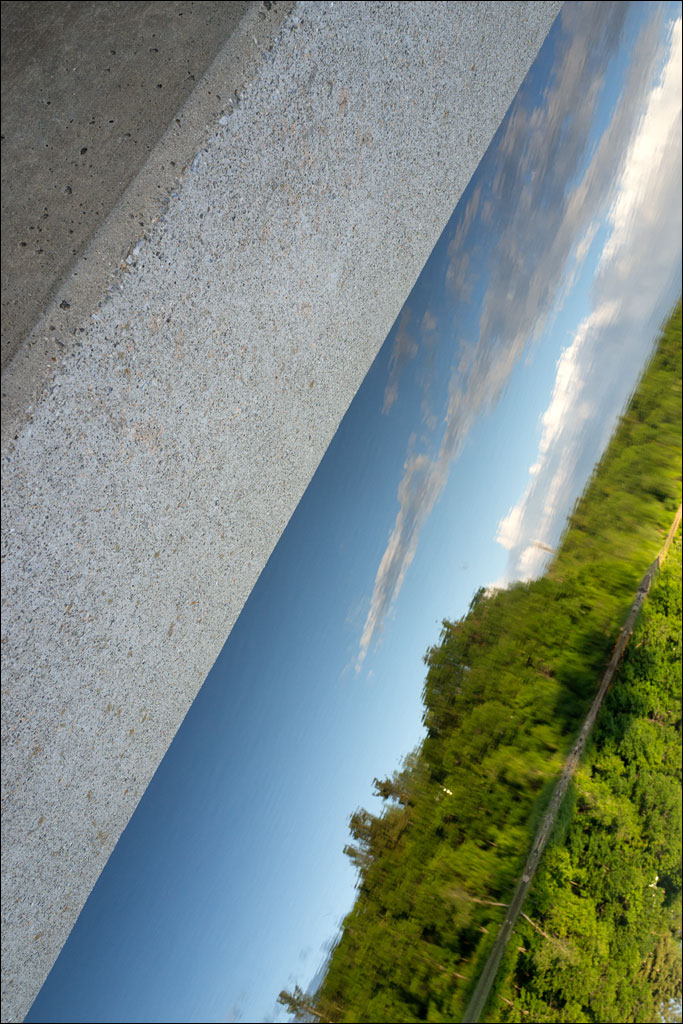 In short, the absence of truth is an unescapable fact of photographic life.
In short, the absence of truth is an unescapable fact of photographic life.
—Geoffrey Batchen
It has become fashionable in the photo art world to label all photography as fiction. This is tossed out like an undisputed fact. It seems the main claim (and there are many sub arguments for the fictitiousness of photography including the Post Photography movement of Geoffrey Batchen) is that photographs can be manipulated and are subjective.
The manipulation argument is strange as it is seen as something new. Ever since the invention of photography, artist have been using it to create fictitious images (just look for the 1857 photograph The Two Ways of Life by Oscar Gustave Rejlander if you think Photoshop was somehow groundbreaking). But that is a bit like saying ever since the Greeks started writing mythologies, writing can only be fiction. But just like mackerel are not all fish, manipulated photographs do not account for all photography. Continue reading
Sabattus Pond
Three Trees
 What is this curious addiction to form humans have? We talk about beauty as if it is a quality of things out in the world. But beauty, as the expression goes, is in the eye of the beholder. That is actually a complex statement. You could take it to simply mean it is a personal opinion, but it is more complex than that: beauty only exists in the beholder. Seeing, or rather experiencing, beauty is an evolved human quality—we are built to create it. But, like most human qualities, we have different capacities to experience it. Eric Kandel in his book The Age of Insight states, “The beauty of an image may recruit not simply a positive emotion, but something more like love, an aesthetic addiction…” Beauty, it seems, lets us fall in love with the world. Click on the image for a larger view.
What is this curious addiction to form humans have? We talk about beauty as if it is a quality of things out in the world. But beauty, as the expression goes, is in the eye of the beholder. That is actually a complex statement. You could take it to simply mean it is a personal opinion, but it is more complex than that: beauty only exists in the beholder. Seeing, or rather experiencing, beauty is an evolved human quality—we are built to create it. But, like most human qualities, we have different capacities to experience it. Eric Kandel in his book The Age of Insight states, “The beauty of an image may recruit not simply a positive emotion, but something more like love, an aesthetic addiction…” Beauty, it seems, lets us fall in love with the world. Click on the image for a larger view.
Birefringence
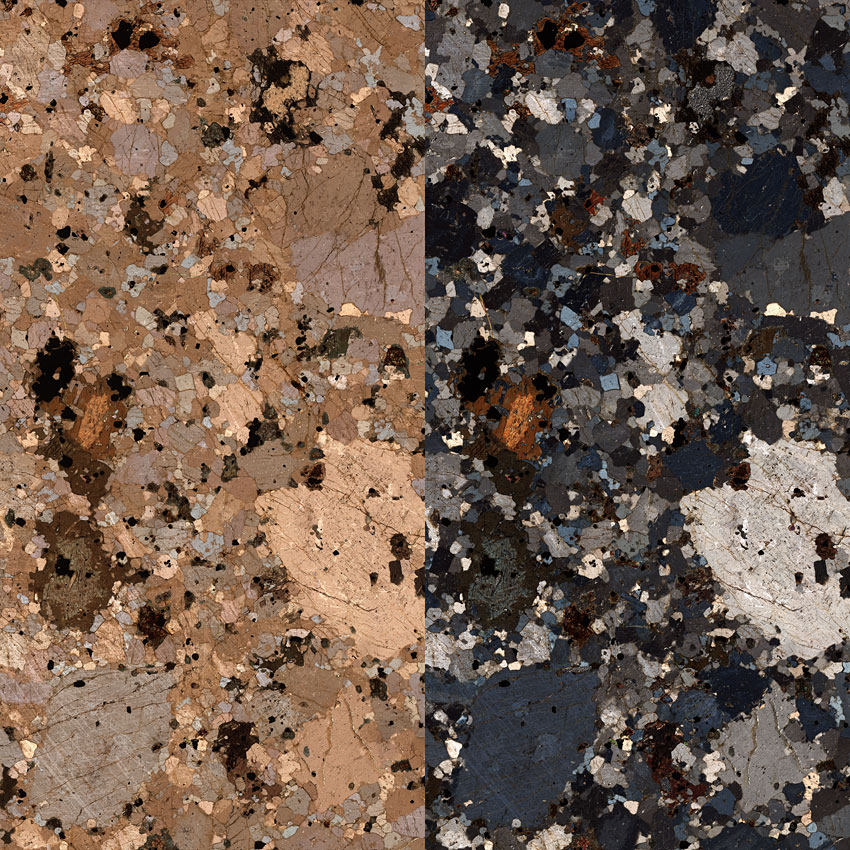 Some material, like the crystals in this granite sample, is known as birefringent, meaning it has two indexes of refraction so the speed light passes through the material depends on its angle of vibration. If you pass polarized light through this material, an odd thing happens—the material divides the light into two perpendicular vibrating rays. Because the rays have two orientations, they move through the material at two different speeds. If the exiting light passes through a second polarizer, the two rays are combined and the difference in their speed creates either constructive or destructive interference, resulting in changes in brightness and color. On the left is a simple brightfield image of a thin section of granite. The right is a polarized image of the same sample. Click on the image for a larger view.
Some material, like the crystals in this granite sample, is known as birefringent, meaning it has two indexes of refraction so the speed light passes through the material depends on its angle of vibration. If you pass polarized light through this material, an odd thing happens—the material divides the light into two perpendicular vibrating rays. Because the rays have two orientations, they move through the material at two different speeds. If the exiting light passes through a second polarizer, the two rays are combined and the difference in their speed creates either constructive or destructive interference, resulting in changes in brightness and color. On the left is a simple brightfield image of a thin section of granite. The right is a polarized image of the same sample. Click on the image for a larger view.
Magic of Light
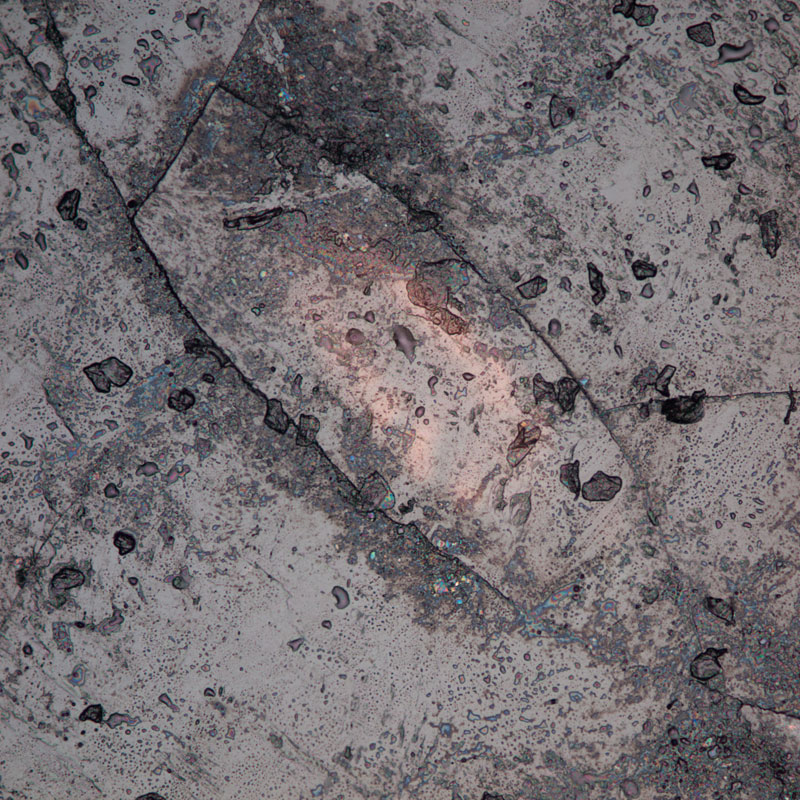 Our experience of light is rather simple —we shine light on something and we can see what it looks like. Shining it from one side or the other does not seem to change the object’s inherent appearance, but just the shading. One of the neat things about microscopes is because they work at such small scales and with very controlled illumination that they can reveal light’s complex nature.
Our experience of light is rather simple —we shine light on something and we can see what it looks like. Shining it from one side or the other does not seem to change the object’s inherent appearance, but just the shading. One of the neat things about microscopes is because they work at such small scales and with very controlled illumination that they can reveal light’s complex nature.
This image is of a tourmaline crystal. The microscope technique is known as a brightfield, meaning if the light striking the sample is not altered by it, you will see an even white field of light. But, because of scattering, absorption, and shifts in phase, the sample modifies the light, decreasing intensity, resulting in an image. This light is parallel to the optical axis. Now, if I took this light and shone it from the side, you would expect a similar result with a few more shadows. Continue reading
Out of Sight
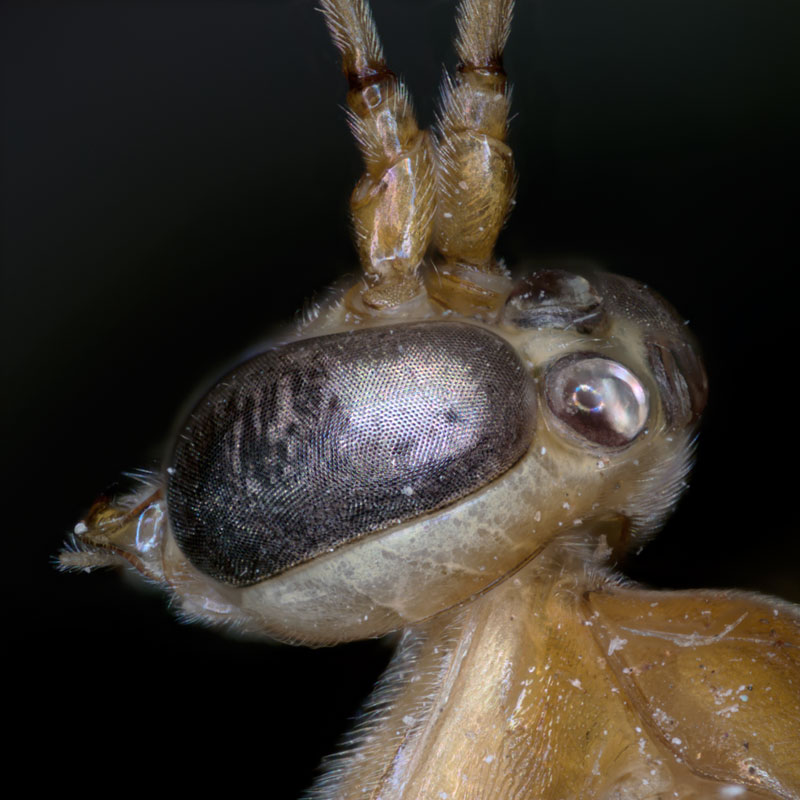 Our vision creates the world. When we look around, we imagine seeing objects in space in front of us. Yet, all we are doing is processing an image projected on the retina of our eyes. The world we see and its external reality is an illusion of our psychology and biology.
Our vision creates the world. When we look around, we imagine seeing objects in space in front of us. Yet, all we are doing is processing an image projected on the retina of our eyes. The world we see and its external reality is an illusion of our psychology and biology.
We take this vision so much for granted that what we perceive must be the same for everything. We all know about the compound eyes of an insect. Unlike the eyes of a mammal, it does not use a projected image to see. What becomes even more amazing is that many insects do not have just two eyes—spiders have eight. This particular animal has three additional eyes on the back of its head, the clear dome structures. What kind of reality does this creature perceive? Click on the image for a larger view.
Depth
Barren Landscape
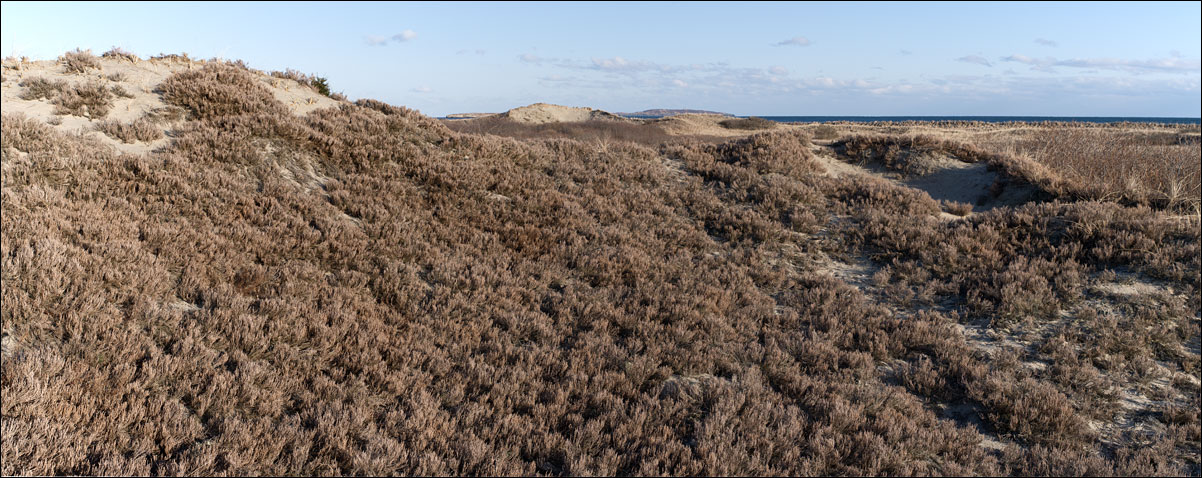 The dunes along Seawall Beach at Bates Morse-Mountain Conservation Area. Winter holds the landscape in stasis. Click on the image for a larger view.
The dunes along Seawall Beach at Bates Morse-Mountain Conservation Area. Winter holds the landscape in stasis. Click on the image for a larger view.
I have recently been around conversations in art, and in particular, photography. One conclusion I keep taking away about our art world seems to be a boredom with the world and its beauty. Photography seems to echoing our narcissistic times by making statements about itself; declaring itself a fiction and fetishizing this revelation. And when it does look at the world, it is to exploit it as a freak show or to confuse banality with profundity.
Or is our wider culture simply bored with the world? Like adrenaline junkies, we seek out novelty, something weird or strange. If there is nothing that gets our immediate attention, do we move on? Has the norms of advertising conditioned us into wanting instant recognition, instant gratification?
Sand is the detritus of the land. Having been reduced to such a fine state, the wind and water control its destiny. Yet, plants have evolved to exploit this unlikely environment. Invading it. Holding the shifting ground in place. And when dormant in winter, this organic colony continues its grip. Even when it trades its summer green for brown, it is beautiful.

